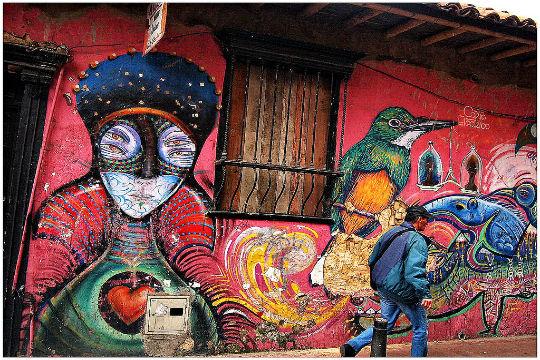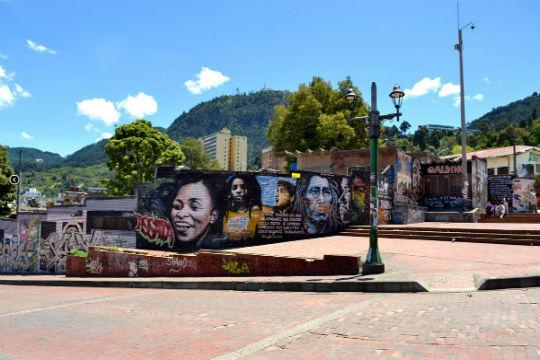
Author
Promotion axis or area
A tour of Bogotá’s world famous graffiti art
Bogotá is the “Athens of Latin America” rich in museums and art galleries, universities, theaters and libraries and, when it comes to culture, the city has its finger firmly on the pulse. Colombia’s capital is now world-renowned for its street art, a product of its own colorful history and freedom when it comes to this particular public art.
Why?
Street artists from across the globe are converging on Bogotá, attracted by the city’s booming street art culture. Crisp, an Australian street artist who has lived and painted in Bogotá for six years, said: “For me, Bogotá is one of the best places in the world for street art because of the quality of the art but also the relevant and potent meanings behind a lot of the works.” Crisp, like many street artists, describes street art as an “uncensored and unedited” form of expression, which means its artists can highlight important socio-political issues on the streets.
Colombia’s biodiversity
Much of Crisp’s own work focuses on Colombia’s incredible biodiversity. “Colombia has many aesthetic and beautiful things to be inspired by,” he said, “It's very biodiversity with the Caribbean and Pacific coast, Andes, Amazon and pampas and all the stunning animals, plants and indigenous cultures that inhabit the country. These are potent images to use in urban art.”

Photo: Juan Carlos Pachón
Freedom to paint
Graffiti in Bogotá is prohibited rather than illegal, which ironically means the capital is now streets ahead when it comes to fine artwork. Other cities, where street art is banned, experience more tagging and poor quality work because perpetrators are on the run from the law. In Bogotá, it’s not unusual to see a team of artists with spray paints and stepladders spending a day on a single mural, often with the owner’s encouragement or payment.
Where?
Street art is everywhere in Bogotá but one of the best places to see it is in the city’s historic La Candelaria quarter, where modern art mingles with colonial architecture. Similarly the city’s 26th street, which runs from La Candelaria out to El Dorado International Airport is essentially an enormous open-air art gallery, with everything from jaguars, comedians and emerald miners to octopus riding bicycles immortalised in a million colors.

Photo: Crisp (You may also enjoy: 5 Colombian neighborhoods you must visit)
Who?
Crisp and co are making a name for themselves overseas and the work of Bogotá street art frontrunners such as DjLu, Toxicomano and Lili Cuca is easy to spot, from DjLu’s distinctive “Banksy of Bogotá” pineapple grenades to Toxicomano’s ironic, 1950s film posters, each artist has their own particular style.
How?
Crisp created the Bogotá Graffiti Tour in La Candelaria four years ago and it runs twice daily, from 10am to 12.30pm and from 2pm to 4.30pm. “People really enjoy finding out about the techniques, artists, history, socio-political representations and meanings behind the murals,” he said. “Everyone I know who visits Bogotá is blown away by the quantity and quality of the work.” For more information on the tour, visit http://www.bogotagraffiti.com. (You may also enjoy: 5 unusual ways to see Bogota)
If you want to experience world class street art in a city that encourages free expression visit Bogota, and if you liked this article please feel free to share it on Facebook, Twitter, LinkedIn, Google+ or any of your social networks.
 Welcome, you are in
Welcome, you are in 


